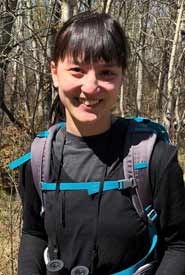Point counts at Wideview: 10,000 steps by 7 a.m.
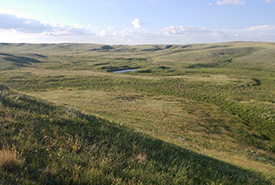
Wideview, SK (Photo by NCC)
3 a.m.: Why am I awake this early? The only other creatures awake right now are the birds. Oh, right. The birds are exactly why I’m awake this early. It’s time for point counts at the Nature Conservancy of Canada’s (NCC’s) Wideview property in southwest Saskatchewan.
Point counts are a research method used for the long-term monitoring of species makeup and the abundance of bird communities (in this case, grassland birds) to help inform land management practices. Several points are spread across the property, and at each point NCC staff take exactly five minutes to record how many different bird species they observe. They also count how many individuals of each species they can identify. Point counts are an important tool for collecting population and location data on species at risk.
4 a.m.: I arrive at Wideview with my supervisor, Sarah Ludlow. I’m a complete novice when it comes to bird knowledge, so our data collection will rely on her expertise. We have to hike more than one kilometre to reach the first point. Wideview has rolling hills and valleys, and sometimes there’s no avoiding going down a steep, 45-degree angle hill and up another to get to where we need to go. There are no trails and no sign markers showing us where the points are. We rely on our GPS to navigate to the designated points.
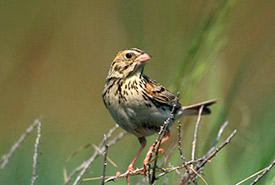
Baird's sparrow (Photo by Alan MacKeigan)
Once we get to the first point, Sarah starts the timer and we stay silent as she listens to the different calls. She speaks up a few times to point out different birds she hears; meadowlark, Baird’s sparrow, vesper sparrow, cowbird and bobolink, just to name a few.
I’m amazed at Sarah’s ease in picking out different bird species among the chorus and determining how many she hears. I’m still not sure where one bird’s song ends and another one begins. Their voices all blend together in a tapestry of song, and I’m still learning how to distinguish among each of the threads.
Related blog posts
5 a.m.: The sun peeks over the hills and blushes pink against the sky as if it’s embarrassed to be showing up to work so late.
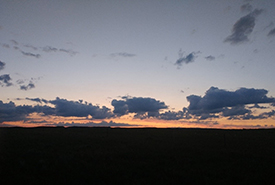
Sunrise at Wideview, SK (Photo by NCC)
7 a.m.: I glance down at my Fitbit. We’ve hit 10,000 steps by the time the rest of the province is waking up. But my gaze snaps up from my wrist at a peculiar sound, unlike anything we’ve been hearing all morning. Birds larger than anything else we’ve seen that morning — we count a total of four — swoop through the air in front of us and take cover in some sage brush. While we aren’t 100 per cent certain, the identifying features we are able to observe lead us to believe that these birds are greater sage-grouse. If so, this is the second time greater sage-grouse have been spotted on this property. This is exciting news for this endangered species, whose natural grassland habitat has been shrinking. Future surveys on the property will help to confirm the presence of this species here at Wideview.
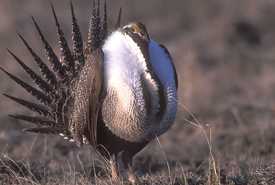
Greater sage-grouse (Photo by Gordon Court)
8 a.m.: We trek back to the road and meet up with the rest of our team. The data we’ve collected will contribute to long-term monitoring and planning for Wideview. But there’s no rest for the weary; we’ve still got a full day’s work ahead of us doing vegetation health assessments. Our final step count for the day? A modest 22,348. All in a day’s work at NCC!
As the custodian of Saskatchewan’s cadastral data, the Information Services Corporation (ISC) is proud to partner with the Nature Conservancy of Canada as sponsor of the GIS intern position, with funding as well as surface cadastral data to support this valuable learning opportunity.
The Conservation Internship Program is funded in part by the Government of Canada's Summer Work Experience program.

